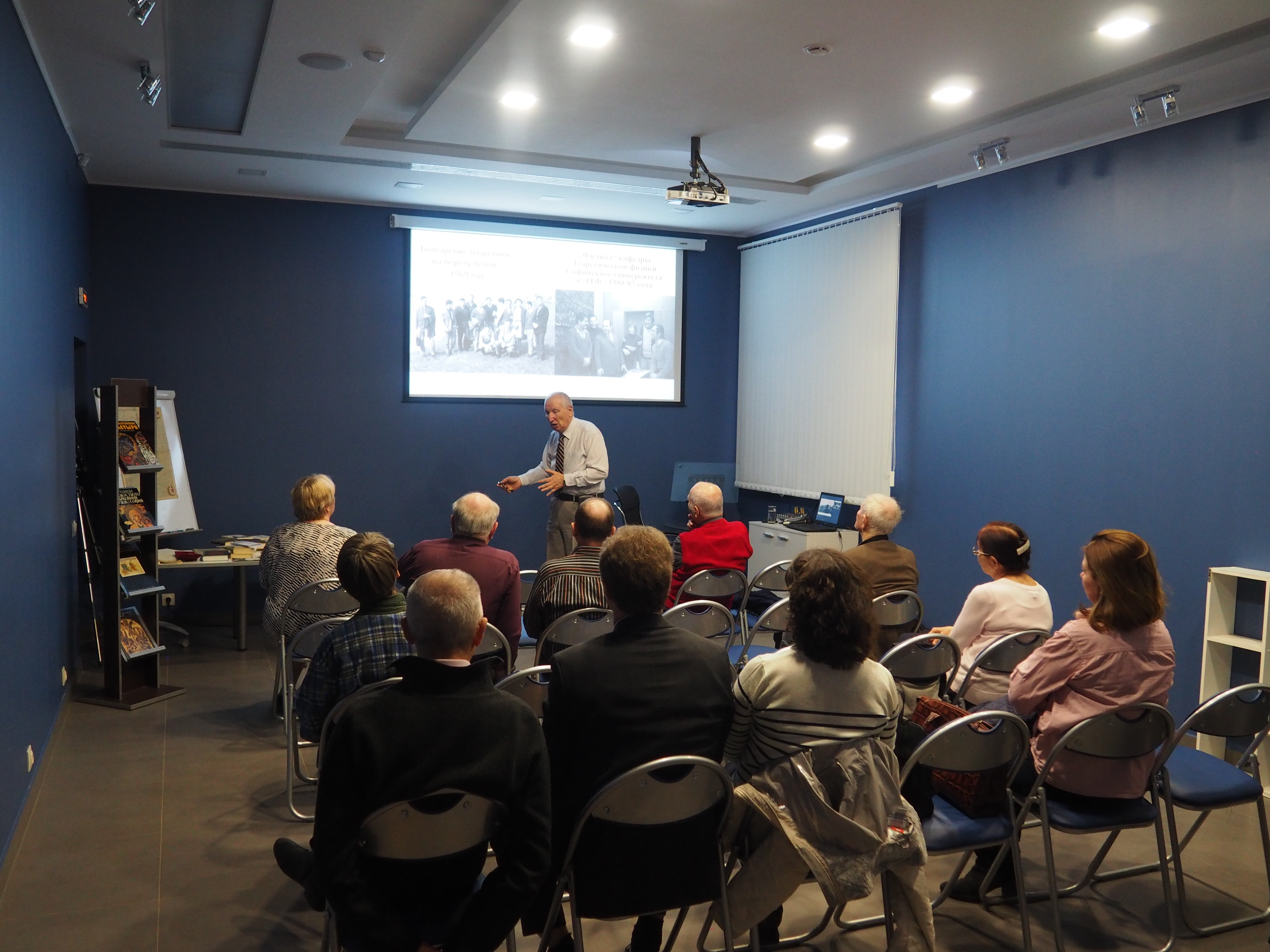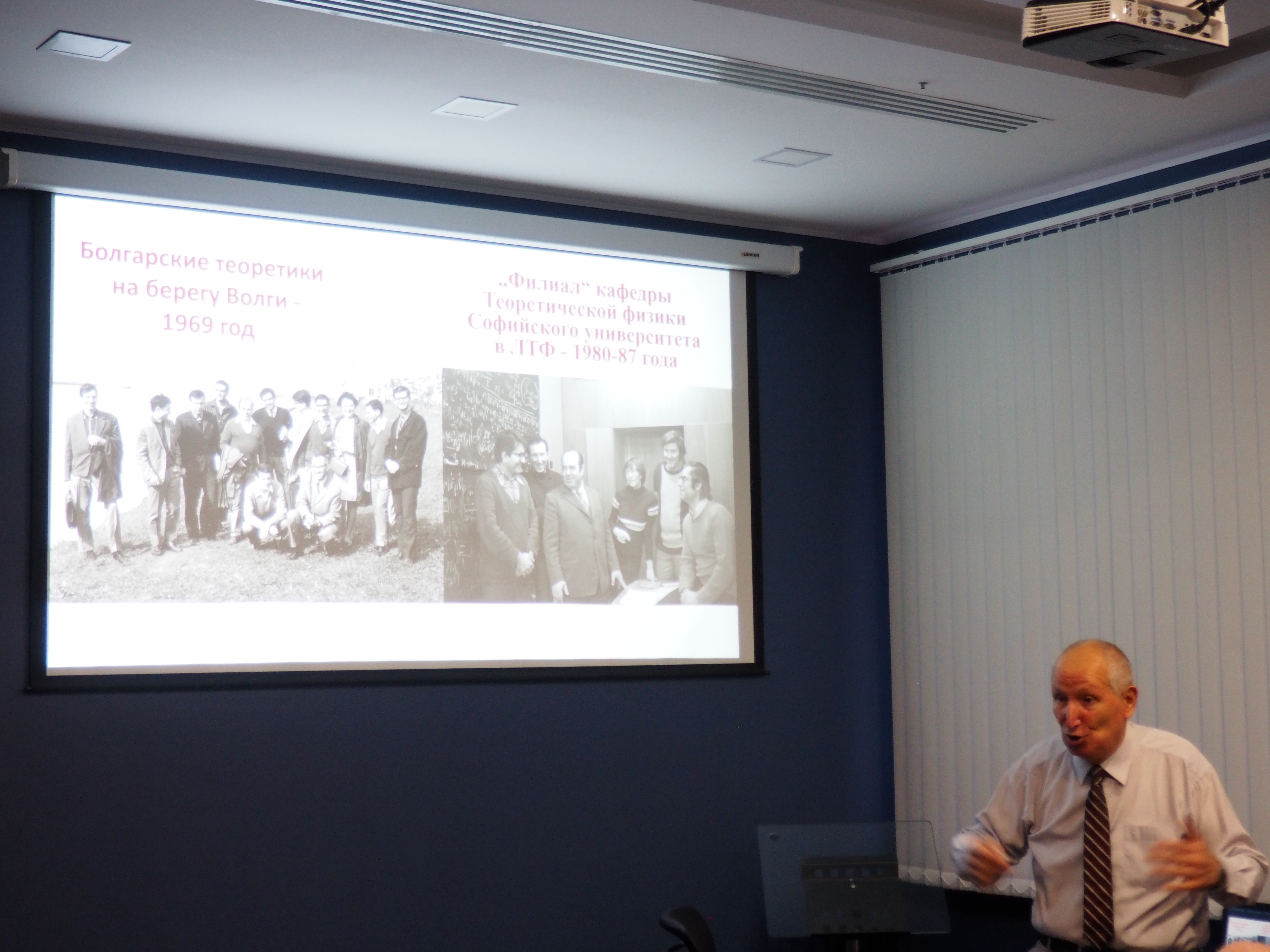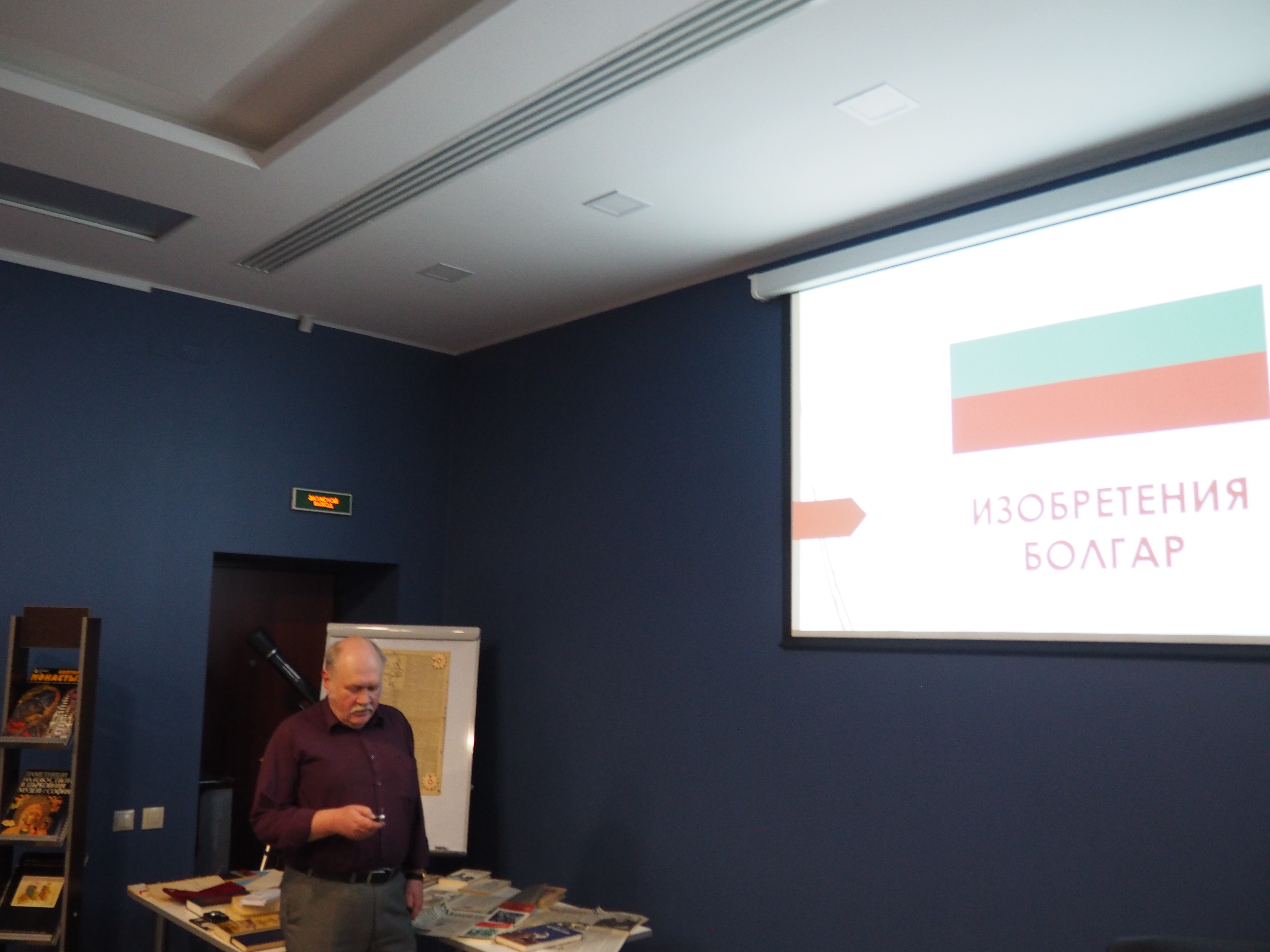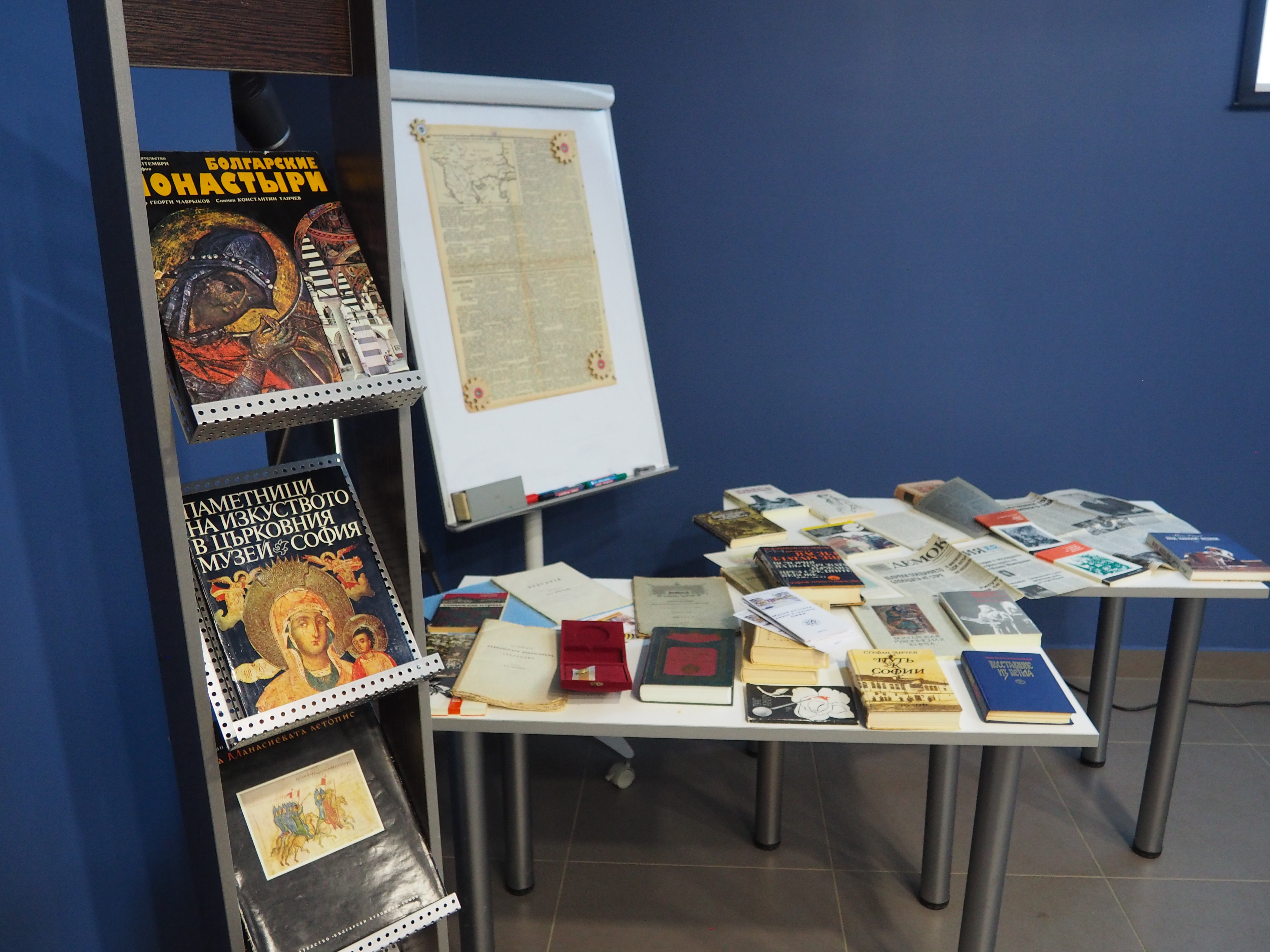Bulgaria at JINR and in the world
News, 18 April 2018
On 16 April 2018, Leading Researcher of BLTP JINR, Doctor of Physical and Mathematical Sciences, Professor Plamen Fiziev delivered the lecture “Bulgaria at JINR” in the Museum of History of Science and Technology of JINR.
As if apologizing for breadth of a set topic, the lecturer started his speech with the saying “You cannot grasp the immense”. It is true that Bulgaria, one of the founding states of the Institute, has been significantly contributing since the JINR foundation Day to the present time. Alleys of JINR sites are named after outstanding Bulgarian scientists who stood at the origins of the Institute, brought up a pleiad of Bulgarian physicists who also left a good memory of them in Dubna.
Academicians Christo Christov, Georgi Nadjakov, Emil Djakov, Ivan Zlatev, Tsvetan Vylov were mentioned during the lecture, they were teachers and colleagues of the lecturer. The list of prominent Bulgarian scientists was headed by Georgi Nadjakov (1896 – 1981) whose scientific career started in 1925 – 1926 in Paris at the Paul Langevin and Marie Skłodowska Curie Laboratory. In 1937, he discovered the phenomenon of photoelectret state. This discovery became the basis for modern copying machines. The author of the discovery (his priority was recognized in the USA in 1955) was paid 10,000 pounds for the patent by the UK Patent Office in 1957. The society has not come to the common opinion weather it was too much or too little. In 1958, Georgi Nadjakov was elected a Foreign Member of the USSR Academy of Sciences. He was also a member of the JINR Scientific Council for several years.
Photos by Anastasia Zlotnikova
Continuing the speech about the pleiad of founders, Professor Fiziev highly appreciated contribution to the JINR development and training of young Bulgarian scientists made by Professor Ivan Zlatev who was a JINR Vice Director. He contributed to the strengthening of scientific centres in Bulgaria with the Joint Institute for Nuclear Research. “In my opinion, he was the best teacher of all the professors I have ever met in my life. His course in theoretical mechanics remains a handbook for young theoretical physicists even nowadays. It was thanks to him that we understood what physics is. It was he who led Matey Mateev to Dubna.” Professor Matey Mateev worked at BLTP JINR for many years and was a member of the JINR Scientific Council. This warm story about the teacher was concluded by an offer to name one of the alleys of the JINR sites after Ivan Stoyanov Zlatev.
The lecture gradually turned into a conversation as far as the audience was keenly interested in the issues concerning higher education and academic science in Bulgaria. The lecturer characterized the state of science in his country as critical without much optimism. If students want to be engaged in modern science, they need to go to the West at CERN or to the East at JINR.
A staff member of the Museum of History of Science and Technology of JINR Kirill Kozubskiy was a co-lecturer of Plamen Fiziev. He spoke about Bulgarian world-level inventors and inventions from antiquity to our computer age. This impressive parade of intellectual achievements demonstrated once again the high level, despite historical events taking place, of Bulgarian people and their scientific elite.
Evgeny Molchanov, JINR Weekly Newspaper



